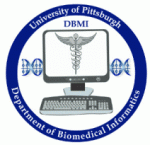
Keynote Speakers
 |
Russ B. Altman, MD, PhD Professor of Bioengineering, Genetics, Medicine (& Computer Science, by courtesy) Chair, Bioengineering Director Biomedical Informatics Training Program Stanford University CV (pdf) Title: Informatics Challenges for Pharmacogenetics >>Click here for presentation slides (.pdf) Abstract: Pharmacogenomics is the study of how human genetic variation impacts drug response phenotypes. We are building the PharmGKB (www.pharmgkb.org/) to catalog all knowledge of gene- drug relationships to support discovery and application of pharmacogenomics. From this effort arise important informatics challenges. I will discuss our work in text mining to extract relationships between drugs and gene variants, our use of this information to create tools for predicting gene-drug interactions, and our efforts building tools to assist in genetic association studies particularly focusing on drug response. |
|
|
|
 |
Philip E. Bourne PhD Professor, Skaggs School of Pharmacy & Pharmaceutical Sciences, UCSD Associate Director RCSB Protein Data Bank Editor in Chief PLoS Computational Biology www.sdsc.edu/pb CV (html) Abstract: The notion of one drug binding to one receptor to treat one disease becomes questionable as we understand more about the human genome and proteome. Rather we need to consider a collective effect associated with binding to multiple receptors which exist in a variety of different pathways by bringing to bear computational and systems biology. I will illustrate this with a bioinformatics approach [1] that is akin to reverse engineering the drug discovery process. Rather than take a large library of ligand molecules and screen them against a known protein receptor, we take a known drug-receptor complex and search the human proteome for other proteins with similar binding sites. These off-targets are then mapped to pathways and systems and may explain a side effect of a drug or point to a possible repositioning of that drug to treat a different condition. Biological outcomes to date include repositioning Parkinson's disease drugs to treat TB [2] and to explain why Torcetrapib failed after 15 years of development and $850M was spent [3]. References: [2] S.L Kinnings, N. Buchmeier, N. Liu, P.J. Tonge L. Xie and P.E. Bourne 2009 Discovery of Novel Drug Leads to Treat Multi-drug and Extensively Drug Resistant Tuberculosis by Repositioning Safe Pharmaceuticals: A Chemical Genomics Approach with Subsequent Biological Validation. PLoS Comp. Biol. 5(7) e1000423. [3] L. Xie, J. Li, L. Xie, and P.E.Bourne 2009 Drug Discovery Using Chemical Systems Biology: Identification of the Protein-Ligand Binding Network To Explain the Side Effects of CETP Inhibitors, PLoS Comp. Biol. 5(5) e1000387. |
|
|
|
 |
Anna Divoli, PhD Postdoctoral Scholar Department of Medicine and Institute of Genomics and Systems Biology The University of Chicago http://home.uchicago.edu/~divoli/ CV (pdf) Title: Knowledge Acquisition for Knowledge Discovery in Cancer Metastasis Abstract: The clinical importance of understanding cancer metastasis and the complex nature of the process have made it an extremely important research subject. We employ Knowledge Acquisition techniques to organize and represent the existing knowledge as it appears in the heads of experts and unveil any compelling trends and controversies. We interviewed 28 experts on several aspects of metastasis and asked them to share with us their subjective opinions. We were interested in their understanding of metastasis and their possible explanations for not yet scientifically answered research questions and unexplained clinical manifestations, as well as their views on the future of the metastasis research field. Detailed analysis of the interview data reveals areas of agreement but also of disagreement, several known theories' devotees and a few challengers, along with a number of interesting viewpoints and the inevitable introduction of some new questions. Besides the biologically interesting perspectives, we examine the language that experts use while communicating to us their views. |
|
|
|
 |
Kirk E. Jordan, PhD Emerging Solution Executive Computational Science Center IBM T.J. Watson Research Center CV (pdf) Title: Spanning Scales - The Combination of Mathematics and High Performance Computing impacts Computational Biology Abstract: Computation is playing an ever increasing and vital role in the biological and healthcare sciences. In many instances, scientists are developing mathematical models and using high performance computing to carry out analysis and simulations that provide insight into biological systems. The complexity of these models often demands increasing compute power and sophisticated mathematics for the solution. In collaboration, biological scientists are using thousands of processors to look at their problems in new ways, leading to science breakthroughs. In this talk, I will briefly describe some of the trends we see in high performance computing and some of the challenges looming on the horizon. I then describe a solution in collaboration with colleagues used in investigating blood perfusion in the brain as an example of a new approach for computational biology. In conclusion, I will point out how this approach is an example of coupling high performance computing and mathematics to tackle multi-scale biological science problems.
|
  |
JOINT KEYNOTE: Ben Keller, PhD Associate Professor Computer Science Department Eastern Michigan University http://people.emich.edu/bkeller/ CV (pdf) AND Barbara Mirel Associate Research Scientist School of Education University of Michigan NCIBI Core Director of Evaluation, Education and Training CV (pdf) Title - Strategies for Elaborating Cognitive Requirements of Bioinformatics Tools >>Click here for presentation slides (.pdf) Abstract: Most bioinformatics tools have been designed for isolated problems, and were not built with consideration to the broader context of their use. This fact creates a situation in which the tasks that scientists perform do not map well to the tools available to them. Our challenge as tool designers and developers is to understand how to better engineer these tools to support user cognition for larger tasks such as those in translational systems biology. This talk will discuss the two strategies we have followed to derive cognitive user requirements: first, by synthesizing best practices identified in the literature, and, second, by generalizing from Mirel’s extensive fields studies of scientists conducting exploratory analysis with tools developed at the National Center for Integrative Biomedical Informatics. The first draws on discrete, independent observations to create general strategies applicable to broader sets of tools, while the second focuses on tools dealing with gene relationships and scientists’ classification and comparison as a prelude to causative reasoning. Our goal is to reflect on how best to apply cognitive engineering to the development of translational bioinformatics and systems biology tools. This application of cognitive engineering includes developing user-centered rationales for requirements. Here we step back to look at and propose specific needs assessment processes that can be used to move incrementally from a model of scientific user cognition to high level user requirements, and ultimately to detailed uses cases and functional specifications for tools. (This work partially supported by NIH grant U54 DA021519.) |
|
|
|
 |
John P. Overington, PhD CChem. Team Leader, Computational Chemical Biology European Bioinformatics Institute (EMBL-EBI) web site: www.overingtonlab.org blog: www.chemblog.org CV (pdf) Title: ChEMBL - Large-scale Open Access Data for Drug Discovery Abstract: The link between the biological and chemical worlds is of central importance in many fields, not least that of healthcare. For example, a major focus in systems biology research is the signalling networks and pathways describing the interactions and functions of large numbers of genes and proteins. Similarly, within healthcare-related chemistry research there is much interest in efficiently identifying drug-like compounds that specifically interact with these proteins/genes. However there has been relatively little research explicitly directed at understanding the linkages between these two historically distinct domains. Key to our work in this area has been the construction of a large and general structure activity relationship database, linking pharmacological activities of compounds through to their targets, and understanding how particular compounds recognise their cognate receptors. Application of rules derived from these databases leads to rapid, economic, and effective identification of quality target and lead combinations for subsequent pharmacological validation. These data have also been mapped to the currently drugged genome, launched drugs, and large numbers of clinical development candidates. These databases are now in the public domain with the specific aim of enabling new translational research. Current status and future challenges for these informatics resources will be discussed. |






